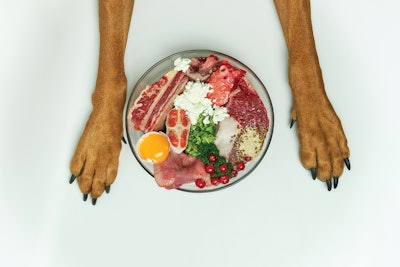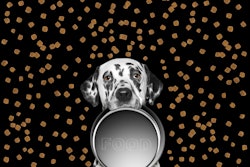
I have to chuckle and shake my head whenever I see an article in mainstream media or hear/read a so-called market expert talk about the “trend of humanization” in pet food. In my mind, calling humanization of pets a trend was accurate 15 to 20 years ago; as the majority of pet owners around the world now consider their pets full-fledged family members, the pet food market has evolved into one where humanization is more of a foundational platform than just a trend. It’s not only here to stay, it underpins the entire market.
Take the area of nutrition. In recent articles about human and pet nutrition trends for 2025, it’s remarkable how often the same terms and concepts appear. If you removed words like “human” and “pet” and read the articles away from their respective websites or other media, it would be difficult to tell which market was being discussed.
Is it human food or pet food?
Case in point: A recent article about human nutrition trends on NutritionInsight.com by William Nichols, “Nutrition in 2025: Longevity, sustainability and weight management technologies on rise,” seems to mimic ones we’ve posted on PetfoodIndustry.com or published in the magazine. The trends — also frequent topics of Petfood Forum presentations — include AI-powered technologies and platforms for conducting and analyzing nutrition research or processing ingredients and pet food.
You’ll also notice trends like healthy aging, preventive nutrition, personalization/customization, functional ingredients, gut health, the microbiome, the importance of protein (as well as alternative protein sources), sustainability and obesity prevention — all of which also appear frequently in pet food reports, articles and presentations. (Oh wait: Unfortunately, that last one, obesity prevention, doesn’t appear often enough for pet food, even though it should.)
This is mostly a positive development, as pet owners are paying just as much attention to their pets’ health and well-being as to their own and are seeking, even demanding, foods or treats that help their dogs and cats live longer, healthier lives. A problem arises when people expect to be able to apply human nutrition and food concepts and trends directly to their pets’ feeding, not fully understanding dogs’ and cats’ specific nutritional needs or how the human food and pet food supply chains work. That’s especially true when it comes to sustainability.
Humanization vs. sustainability
In an article on pet food sustainability by Lindsay Beaton coming out in the February issue of Petfood Industry magazine, industry experts expressed concerns related to popular trends, pet owner demands and perceptions. A good example is with meat byproducts: a longtime staple of the industry, with strong nutrition, palatability and sustainability bona fides but also with negative connotations among consumers, fueled by some pet food rating sites. The situation seems to have improved in recent years, perhaps due to some people rebranding these proteins as “co-products,” but a stigma persists.
“From an overall nutrition platform, pet nutrition is an incredibly sustainable industry,” said Ryan Ordway, Ph.D., director of technical services – international ruminant & global monogastrics for health and nutrition solutions company Balchem. “Reports indicate that only about 40–50% of material from human food processing (beef, poultry, swine and aquaculture) are acceptable by U.S. citizens for their consumption. However, the pet food industry has processes in place to recapture the nutritive value of potentially discarded protein co-products.
“Reducing the reliance on expensive cuts of protein for pet foods will provide greater amounts of material for the ever-growing human food market,” he continued. “Therefore, we must 1) develop new technologies that allow for continuous upcycling of protein co-products, and 2) educate pet parents about the incredible nutritional benefits of protein co-products for their pets.”
Another example of a human dietary trend possibly being too literally applied to pet food is the paleo craze, which was all about high protein and low or no carbohydrates. (The latter have also received a bad rap among some pet owners and pet food rating sites.) When adopted in pet food, the ultra-high protein trend has led to some cases of over-nutrition, not just with protein but also in general, contributing to the pet obesity problem. And because people have demanded the sources for all this protein be “human grade” (real or perceived), the trend has also hampered sustainability progress in pet food, as Ordway alluded.
The shiny object syndrome in pet food
In the same article, Doug Barton, CEO, and Hunter Ellis, brand experience strategist, of ecommerce digital marketing agency Trone, addressed an outcome of humanization’s influence in pet food that isn’t just about nutrition: The resulting explosive growth in the category can lead to pet owners “constantly being hit with ‘shiny object syndrome’ when it comes to the need to innovate and market new ingredients and flavors on the manufacturer side,” they said.
Their comments were in relation to sustainability, but the phenomenon also contributes to pet owners’ being confused and overwhelmed by all the pet food options on retail shelves and online. To wit: In late 2024, Royal Canin conducted a survey among more than 1,000 puppy owners in North America, and 62% reported feeling overwhelmed by the number of choices in puppy food and struggling to figure out what ingredients are important.
Still, despite these negatives and concerns about humanization, there’s no denying it’s provided a huge boost for the pet food market, driving ongoing robust growth and dynamism. It’s not going anywhere, and overall, that’s a very good thing.


















